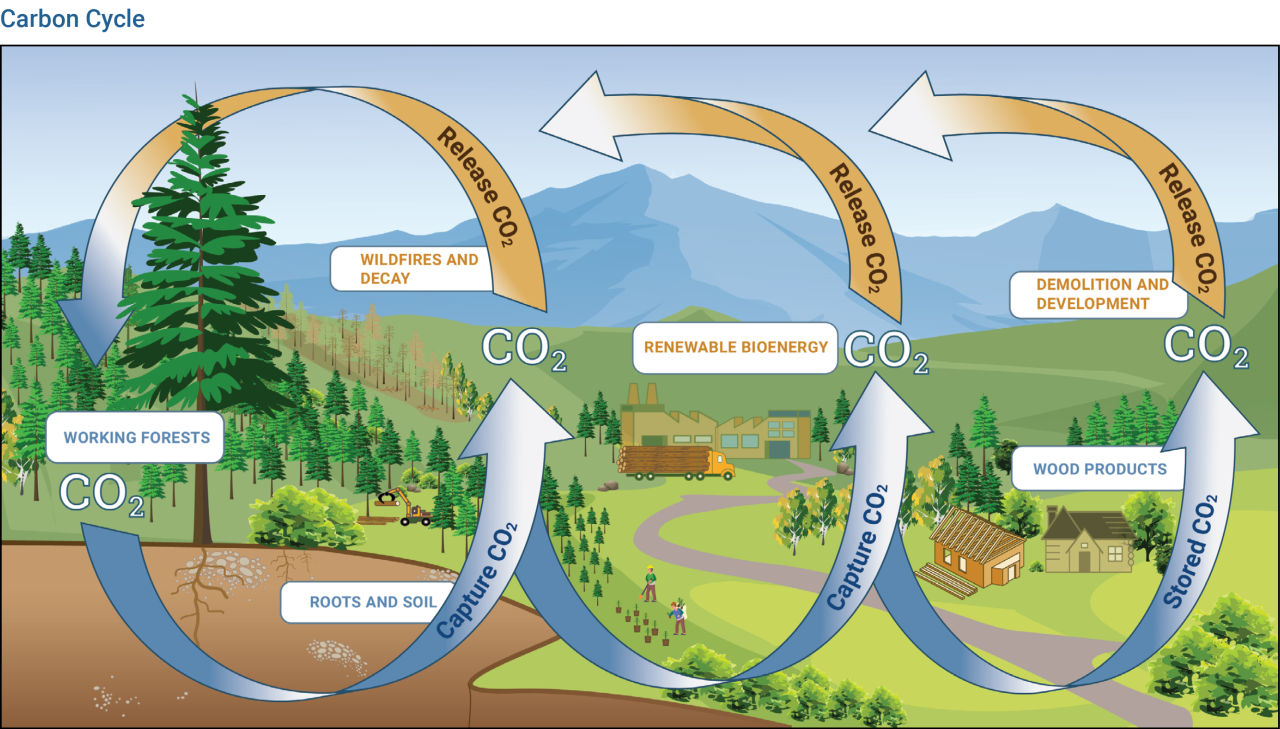NORTHAMPTON, MA / ACCESSWIRE / November 1, 2024 / Sustainably managed forests combat climate change through carbon removal, storage and cycling. Trees absorb atmospheric carbon dioxide through photosynthesis and store it in the branches, trunk, needles, and roots. Using wood products for building stores tree carbon and using biomass for energy retains carbon within a natural loop.
Active forest management enhances carbon removal from the atmosphere compared to unmanaged forests. As forests mature the rate of carbon sequestration slows, and natural tree mortality increases. Working forests are managed to maintain optimum tree density and spacing resulting in a vigorously growing forest that minimizes the risk of catastrophic losses. Unmanaged forests increase the chance of carbon losses from disturbances such as fire, insects, disease infestations, or decay.
Timber harvest initiates the forest products manufacturing process and long-term storage of forest carbon in wood products. In addition, reforestation after harvest restarts the process of sequestration and storage in the next tree growing cycle. At the time of harvest, 68% of the carbon in a typical sawtimber tree is transported to the mill and 32% remains on site and enters the cycling process. The remaining material cannot be used in the production of forest products. This is a biogeochemical cycle where elements including carbon move through the soil, living organisms, air, and water.
The decomposition of treetops and roots and movement of tree carbon into the mineral cycle where it moves into the soil and atmosphere is a slow process. Twenty years after harvest in Idaho, approximately 35% of the carbon in tree parts that remained in the forest at the time of harvest is still held in tree biomass. Twenty years after harvest in the U.S. South, approximately 20% of the carbon is held in tree biomass.
Wood products manufacturing converts the logs into long-lived wood products, storing about 55% of the carbon in the wood and acting like a "carbon vault." The residuals or byproducts produced during the lumber and wood panel manufacturing process are utilized to manufacture additional forest products or to produce biogenic energy.
Newly planted trees grow and capture additional carbon. Once they grow to the end of a rotation, harvest occurs and conversion of the harvested logs to wood products begins the long-term carbon storage. Replanting re-starts the sequestration process. When multiple rotations (cycles of tree planting, growth and harvest) overlap carbon storage in wood products, the result is cumulative carbon storage that increases over time.
Forest management concentrates on the growth of harvestable crop trees for use in solid wood products, which maximizes the amount of forest carbon that is captured and stored in long-lived wood products. Harvesting mature trees and replanting increases the rate of carbon uptake, as well as generating wood for lumber and other wood products. Overall, forests, harvested wood products, and urban trees in the U.S. offset more than 11% of total GHG emissions annually.
The greenhouse gas emissions from the boilers burning wood residuals produce biogenic emissions. Even though the wood residuals emit CO2 when burned, the carbon emitted is part of the biogenic cycle rather than an increase in total carbon in the atmosphere from burning fossil fuels. Using residuals for energy sourced from sustainably managed forests reduces wood waste and has the additional benefit of avoiding carbon emissions from fossil fuels.

View additional multimedia and more ESG storytelling from PotlatchDeltic on 3blmedia.com.
Contact Info:
Spokesperson: PotlatchDeltic
Website: https://www.3blmedia.com/profiles/potlatchdeltic
Email: info@3blmedia.com
SOURCE: PotlatchDeltic
View the original
press release on accesswire.com
